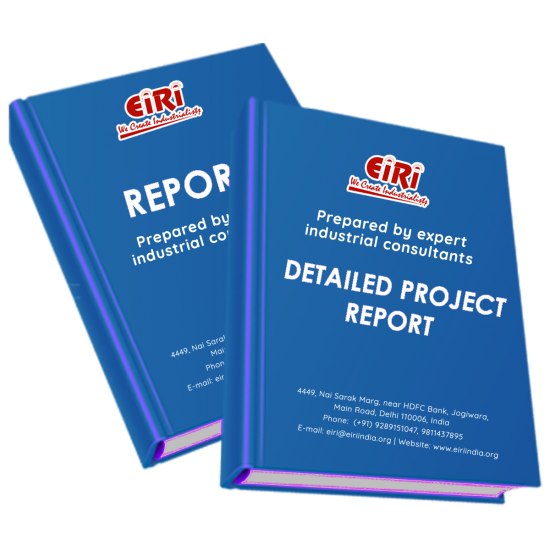The project report includes Present Market Position and Expected Future Demand, Market Size, Statistics, Trends, SWOT Analysis and Forecasts. Report provides a comprehensive analysis from industry covering detailed reporting and evaluates the position of the industry by providing insights to the SWOT analysis of the industry.
Curcumin, the natural yellow pigment in turmeric, is isolated from the rhizomes of the plant Curcuma longa. It constitutes about 2-4% of the composition of turmeric. In the south and southeast tropical Asian countries, turmeric has been used for centuries as a spice to give the specific flavor and yellow color to curry. Turmeric became a very important spice to mankind when it was observed that the addition of turmeric powder in food preparation preserved its freshness and nutritive value. The use of turmeric became more popular when it was found to act as a therapeutic agent for various illnesses. In the Ayurvedic system of medicine, turmeric is used as a tonic and as a blood purifier. Its role in the treatment of skin diseases and its ability to soften rough skin resulted in the prolific use of turmeric in topical creams and bath soaps in India. Turmeric is also used in home remedies in the treatment of cuts, wounds, bruises, and sprains. Its use as an anti-inflammatory and antimicrobial agent has been reco
gnized for more than a century.
The importance of turmeric in medicine took a new twist when it was discovered that the dried rhizome of Curcuma longa is very rich in phenolic, whose structures have been identified as curcuminoids. Phenolics are known to possess antioxidant properties. Free radical mediated damage to biological systems is recognized as the initiating agent for many diseases, such as cardiovascular diseases, cancer, and arthritis.
Turmeric and its constituents show beneficial effects on these diseases and on other illnesses. For example, the low incidence of large bowel cancers in Indians could be attributed to a high intake of natural antioxidants, such as curcumin in the diet. The anti-mutagenic and anti-tumor effects of curcumin are most widely studied.
However, in recent years, it has been shown that the inhibition of arachidonic acid metabolism, modulation of cellular signal transduction pathways, inhibition of hormone, growth factor, and oncogene activity are some of the mechanisms by which curcumin causes tumor suppression. Chemo preventive activity of curcumin is observed when administered prior to, during, and after carcinogen treatment as well as when it is given only during the promotion/progression phase (starting late in premalignant stage) of colon carcinogenesis in F 344 rats.
Curcumin is also a powerful inhibitor of the proliferation of several tumor cells, as well as an anti-inflammatory agent. It exhibits anti-clast genic, anti-fungal and anti-viral properties. However, the lack of information regarding the mechanisms of action of curcumin has precluded its clinical use in western countries. Several recent studies have given some insight into the molecular basis for the action of curcumin at the cellular level.
Curcumin is the main active ingredients in Turmeric. Curcumin is primarily used as a cholinergic and used to improve joint health. Curcumin synergizes particularly well with piperine, greatly increasing its bioavailability. Curcumin supplements can reduce age related memory loss by inhibiting the buildup of beta amyloid, a peptide commonly found in age related degenerative diseases of the brain. Curcumin Induces flow of bile which breaks down fat, keeps heart healthy by normalizing cholesterol level. Curcumin is helpful in digestive support and arthritis pain relief.
Curcumin is an orange-yellow crystalline powder. Minor amounts of oils and resins naturally occurring in turmeric may be present.
The origin of the plant Curcuma longa L., which belongs to Zingiberaceae family is India. The plant is distributed throughout tropical and subtropical regions of the world, being widely cultivated in Southeast Asian countries. Turmeric, i.e., the ground rhizomes of Curcuma longa L., has a long history of use in food as a spice, mainly as an ingredient in many varieties of curry powders and sauces, where curcumin from turmeric is a main colouring substance.
The turmeric (Curcuma longa) plant, a perennial herb belonging to the ginger family, is cultivated extensively in south and southeast tropical Asia. The rhizome of this plant is also referred to as the root and is the most useful part of the plant for culinary and medicinal purposes. The most active component of turmeric is curcumin, which makes up 2 to 5% of the spice.
Curcumin is an orange–yellow crystalline powder practically insoluble in water. The structure of curcumin (C 21 H 20 O 6) was first described. Turmeric is used as a dietary spice, coloring agent in foods and textiles, and a treatment for a wide variety of ailments. It is widely used in traditional Indian medicine to cure biliary disorders, anorexia, cough, diabetic wounds, hepatic disorders, rheumatism, and sinusitis. Turmeric paste in slaked lime is a popular home remedy for the treatment of inflammation and wounds. For centuries, curcumin has been consumed as a dietary spice at doses up to 100 mg/d. Extensive investigation over the last five decades has indicated that curcumin reduces blood cholesterol.
It is intended to prepare a Feasibility Report to install a Curcumin Extraction Facility from Turmeric with a processing capacity of 2000 Kg/Day having Curcumin production rate of 60Kg/Day as a Green Field Project.



